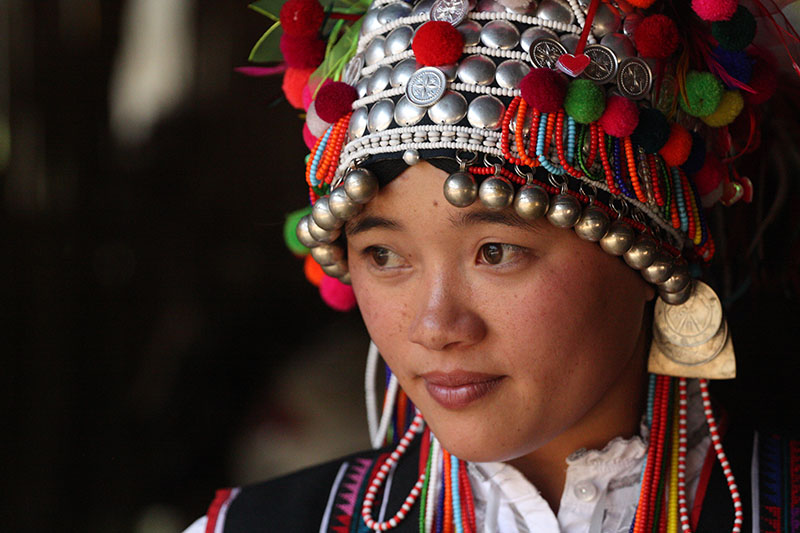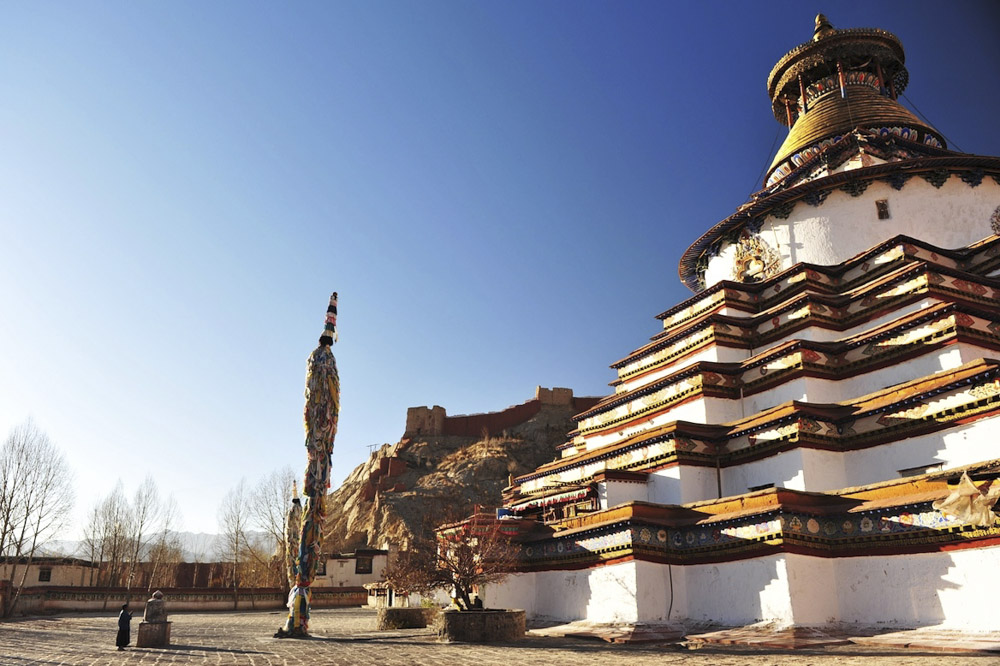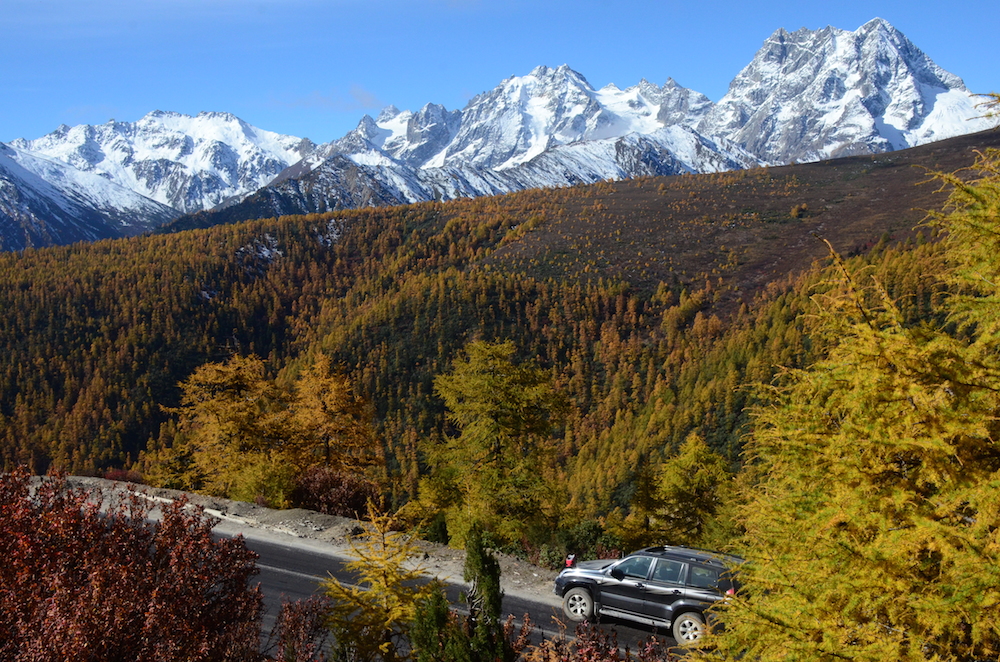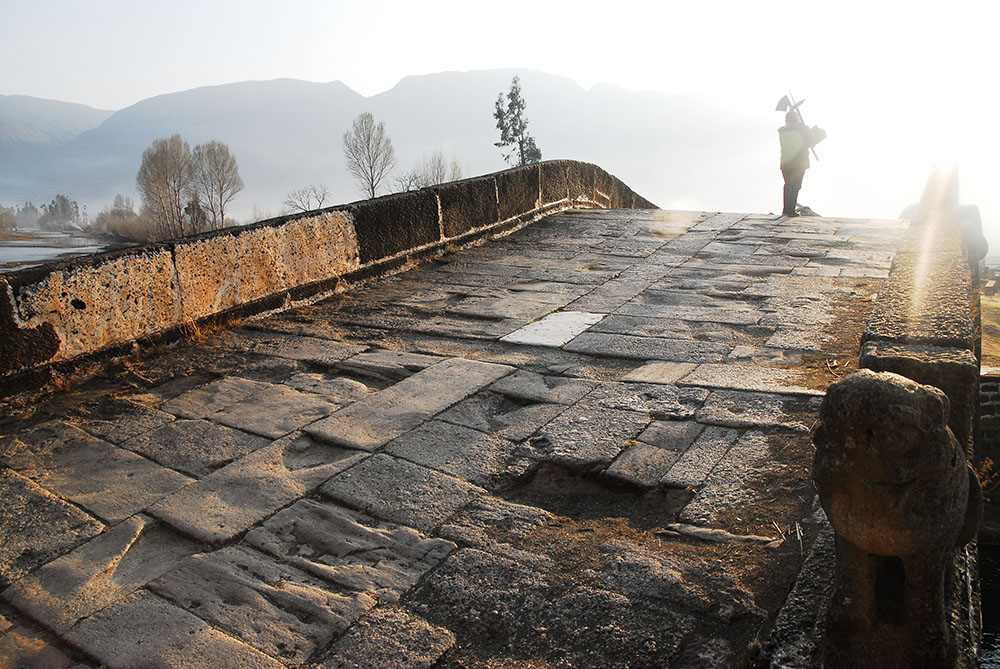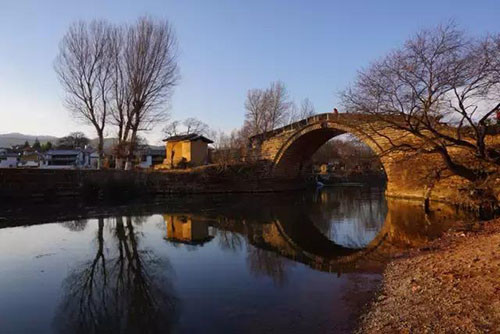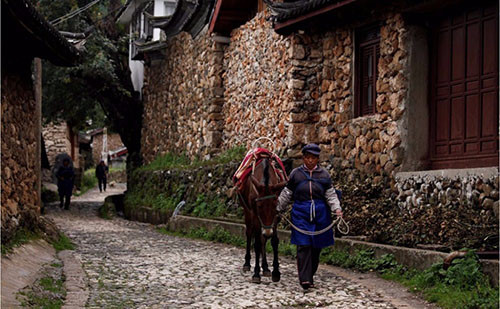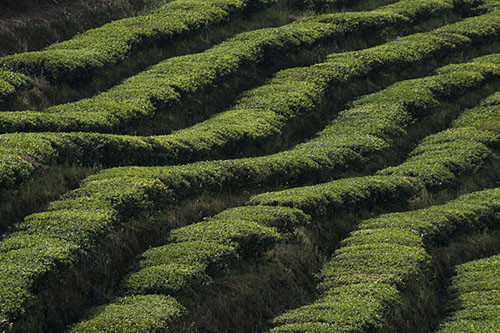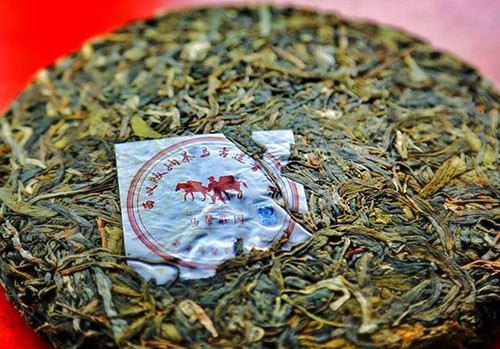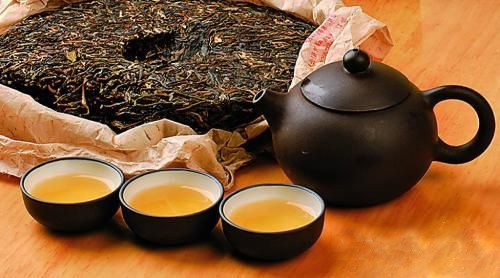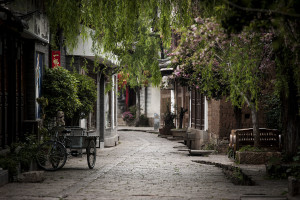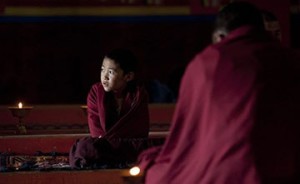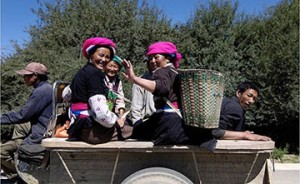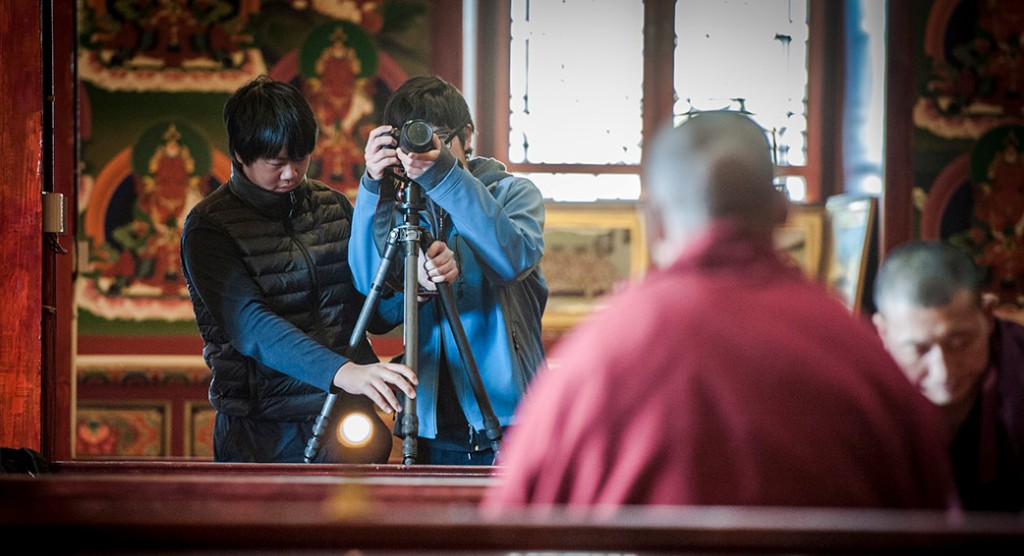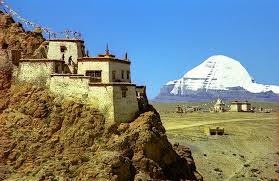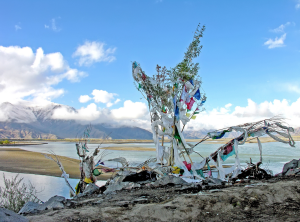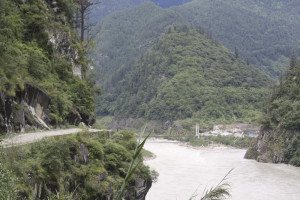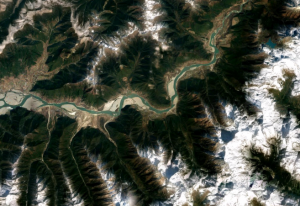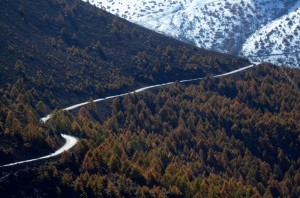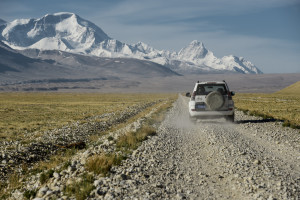Category: China
Posted on 8 Nov, 2018
There are many things that make Yunnan – one of our favourite Asian destinations – unique. We take a look at eighteen of the oddest…
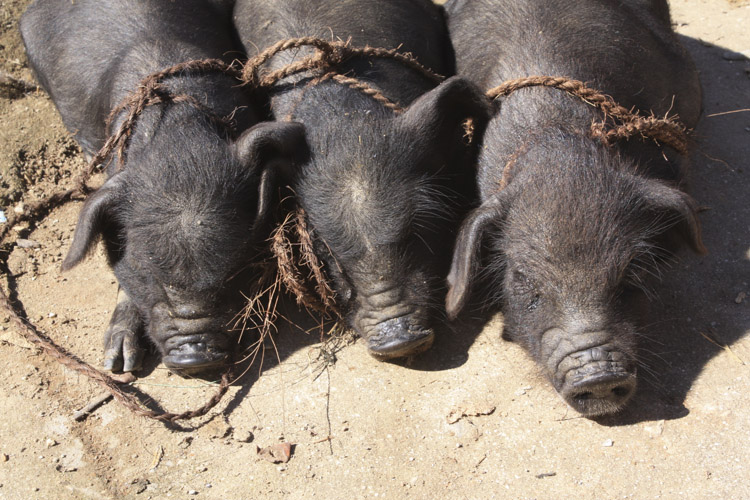
Posted on 16 Jan, 2018
From the windswept traces of ancient trade routes to thriving modern marketplaces, the story of commerce in Tibet is a fascinating one. Joanna James finds out more…
Posted on 6 Jan, 2018
Our founder, Peter Schindler, remembers the twists and turns of an autumn journey in northwest Yunnan…
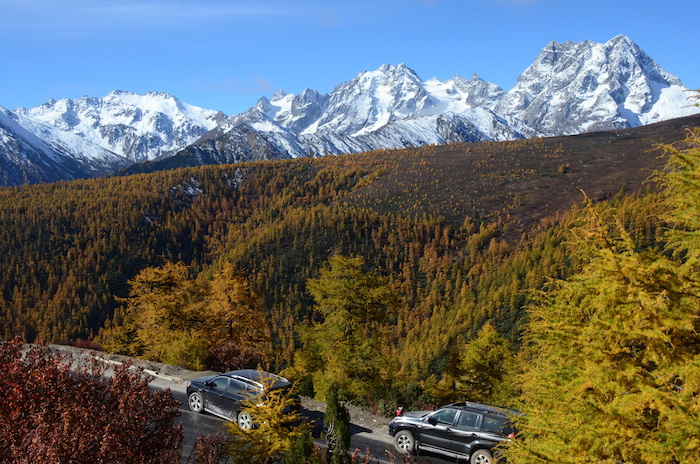 Continue reading
Continue reading
Posted on 27 Aug, 2017
In the second of our two photo essays on beautiful Yunnan,
we look to the province’s lush and exotic south, Xishuangbanna…
Posted on 25 Aug, 2017
Whether you’re on the fringes of the Tibetan world in Yunnan or Sichuan,
travelling amongst Qinghai’s yak herders or heading for Tibet’s “big city”, Lhasa, make sure that you leave time for the following, our top ten Tibetan experiences…
Posted on 15 Aug, 2017
China’s Yunnan province sits astride a crossroads.
Here, lowland China, Tibet, Southeast Asia and the Indian Subcontinent meet, creating somewhere utterly special. In the first of two photo essays, we look to the province’s rugged northwest…
Posted on 25 May, 2017
The Tea Horse Road linked Tibet and South-East Asia for over a thousand years. Heavily-laden mule trains would trek for months from the subtropics to Lhasa, crossing some of the most challenging terrain on earth en route. And for why? All for a cup of tea…
Just outside the village of Shaxi in Yunnan, a bridge arches over the Heihui River. Its flagstones have been worn smooth by generations of travellers’ feet, and it is a beautiful addition to the landscape, but it didn’t really catch my attention until someone told me that the bridge was part of the Tea Horse Road.
It was my first trip to Shaxi, and I had barely heard of the Tea Horse Road, but there’s something about trade routes that inevitably tugs at the imagination. Epic travels over mountain ranges, across deserts and seas, all in order to exchange luxuries like silks or spices – they’re the quintessential overland journeys.
The Tea Horse Road was a network of trails that snaked from the gentle tea-growing hills of southwest China across eastern Tibet to Lhasa and beyond. Many things – beliefs, news, genes – made their way along the route, but the route was established and maintained in order to trade and transport tealeaves.
This tea came from its original home, the humid forests that sprawl across today’s southern Yunnan and northeastern Burma. Here, you can still walk into the woods to see gnarled tea trees that have been tended by Aini, Blang and Jinuo farmers for centuries. The leaves were – and are – steamed and packed into bricks or discs along with the caffeine-and tannin-rich stems and stalks, making the tea easy to transport for the long, tough journey ahead.
The route ran north, out of the subtropics and uphill to Dali, which, at the time of the first tea caravans, was the capital an independent kingdom, Nanzhao. Carried by man and by mule, the tea changed hands with each shift in the terrain. The challenges of adapting to the geographical variation en route would have been insurmountable for a single set of mules and muleteers.
Instead, the tea passed from one people to another as it worked its way north. From Dali, Bai and Hui traders took over, before handing their precious cargo over to Naxi and Yi caravans. Occasionally, the tea would reach the edge of Tibet, where lados (Tibetan muleteers) took over for the longest and most perilous stretch across the mountains of Chamdo to Lhasa.
It was tea that bound the links of this chain together. Along the route, sharing tea was considered as binding as a signature or wax seal, creating trust as it was sipped. Tea also connected the traders to the communities that hosted them, bartering tea balls for access to pasture or supplies.
And yet, while the tea itself was undeniably important to the communities the Tea Horse Road passed through, the mule trains bought something less tasty but even valued with them; Information and news of the world beyond. For many villages along the trail, the muleteers were a vital link to the wider world. When this trading route was bypassed by highways in the mid-twentieth century, these links were largely lost.
The Tea Horse Road existed for trade but it meant more than that. The journey might have been a relay, but it was also a bridge, connecting quite different groups of people to one another, with all working together for a common goal – the humbled and most refined pleasures, a cup of tea.
* * *
For those interested in reading a first-hand account of a modern journey along the Tea Horse Road, we thoroughly recommend occasional On the Road Experiences host, Jeff Fuchs’s 2008 book, “The Ancient Tea Horse Road”.
Our journeys on Tea Horse Roads…
YUNNAN THROUGH A LENS: TEA HORSE TRAILS
Capture memories as beautiful as the landscape on this photographic journey through northwest Yunnan…
Kunming – Xizhou – Lijiang – Tacheng – Shangri-La – Kunming
- • Explore this region’s incredible diversity of plant and animal life, and the large number of ethnic minorites
- • Wander cobbled streets in well-preserved old towns and feel through you and your camera are traveling back in time
- • Photographer Ron Yue will be on-hand to coach you through a series of masterclasses and workshops during this journey
Journey Dossier
Nov 3, 2017
A beautiful back road journey through Yunnan’s less well-known village treasures.
Kunming – Xizhou – Shaxi – Tacheng – Deqin – Shangri-La – Lijiang – Kunming
⦁ Discover a region of northwest Yunnan which can lay a reasonable claim to being the home of James Hilton’s fictional Shangri-La!
⦁ Enjoy the perfect combination of adventure and luxury; often you will find yourself in the middle of nowhere and yet every evening you will be in charming hotels
Journey Dossier
Nov 17, 2017
FROM SHANGRI-LA TO THE LANNA KINGDOM
Cross the borders of three countries within a journey!
Where do we go?
Day 1: Arrive in Kunming
Day 2: Shangri-La to Lijiang
Day 3: In & around Lijiang
Day 4: Lijiang to Xizhou
Day 5: Xizhou to Dianchi Lake
Day 6: Dianchi Lake to Menglun
Day 7: In & around Xishuangbanna
Day 8: Menglun to Luang Namtha
Day 9: Luang Namtha to Chiang Saen
Day 10: In the Golden Triangle
Day 11: Chiang Saen to Chiang Mai
Day 12: Depart from Chiang Mai
What you will discover
Journey Dossier
Dec 22, 2017
Posted on 4 May, 2017
Faces from the Land of Snows
Many of us are nervous when it comes to taking a stranger’s photograph, but portraits often provide the best memories – and the most striking images – from a trip. Professional photographer and our photography coach, Ron Yue presents some of his favourite portraits from Tibet…
|
When travelling on the Tibetan Plateau, one of the most striking things is how devout most people are. Their Buddhist faith decides and drives many aspects of everyday life. The lady with the beautiful coral earrings (below) was pausing mid-kora (prayer circuit) on the Barkhor in Lhasa. To the uninitiated, the Barkhor’s foot traffic seems unceasing, but to Tibetans it is punctuated with holy places and tiny shrines, spaces to stop, reflect and pray.
The Barkhor is Lhasa’s religious heart, but the city is also ringed by great monasteries, each with its own tradition of learning. Here, at Sera, young monks gather each afternoon to debate scripture. Each point is illustrated with a dramatic flourish – the clapping of hands, the stamping of feet and the striking down of their opponent’s point.
These scenes are repeated – with local variations – acoss the Tibetan Plateau, from Yunnan to Ladakh. Below, a lady prays with a mala (a string of 108 prayer beads) wrapped around her fingers, in the dawn light outside the Ganden Sumtseling Monastery, a thousand kilometres east of Lhasa.
It is not just the elderly that follow Buddhist traditions. In fact, many pilgrimages are so strenuous that only the young can attempt them. Below, a teenagerl prostrates herself on the Barkhor kora. After I shot this photograph she stood up, moved two paces forward and lay down again, measuring the length of the circuit with her body. She will complete the kora 108 times like this before her pilgrimage is complete.
Not all religious practices are so arduous though – for the onlookers at least! Below, a man picked from the crowd at Gyantse’s Saga Dawa celebrations is covered with flour by a clown. These clowns are tasked with keeping the audience amused, against a backdrop of solemn religious dances.
Far from Tibet’s towns and monasteries, a nomadic lady (below) welcomed us into her black yak-hair tent. Once common, nomads’ camps are becoming harder to find, as the government encourages the drokpa to move into permanent housing.
As a photographer, these final two images are among my favourites. A young boy in Shigatse shows me how it’s done…
…and a lady decked out in beautiful turquoise and coral jewelry takes a quick snap in Yunnan:
Each time I travel in Tibet I find new inspiration from its incredible landscape and wide open skies, but it’s the memories of connecting with people here that I always remember most fondly. What a special part of the world! |
Our journeys in the Land of Snows…  From Lhasa to Mt. Everest Base Camp… Where do we go? Day 1: Arrive in Kunming What you will discover ⦁ Lhasa, the capital of Tibet with the Potala Palace and the holiest Tibetan temple, the ⦁ Visit the old towns of Gyantse and Shigatse ⦁ Drive along Lake Yamdrok and Lake Namtso, the two holiest lakes in Tibet ⦁ Enjoy an unforgettable view Journey Dossier
————————————  Our ALL NEW, UNIQUE journey from subtropical Lao to the Himalayas…
Where do we go? Day 1: Arrive in Laos What you will discover ⦁ Drive from charming Luang ⦁ Highlights include: Luang Prabang, Xishuangbanna, Meili Snow Mountain, Ranwu Lake, Lhasa and much more in between Journey Dossier ————————————
 Our most magnificent photography trip in Tibet
Where do we go? Day 1: Arrive in Kunming What you will discover ⦁ Lhasa, Mt. Everest, holy lakes, adventure, blue skies, snow-capped mountains, red-robed monks, the Jokhang, the Potala, open roads…a journey for *your* life time! ⦁ Learn how to see beauty and capture moments with Master Photographer Ron Yue and Journey Dossier Stories |
Posted on 22 Apr, 2017
When is a photo more than a photograph?
The interview wasn’t going to plan. I was talking to two young people, Hugo (11) and Astrid (8), who joined our first family photography trip a year ago. The thing was, they couldn’t remember very much about it. I had arrived with a neat set of questions: Were you interested photography before the trip? What was the most memorable part? Astrid remembered a friendly dog; Hugo a young boy playing with blocks.
We began to look through photography coach, Ron Yue’s photographs from the trip. These jogged their memories, and more details began to emerge – though seldom the ones I expected.
|
The itinerary starts in Kunming before heading to north-west Yunnan, taking in Dali, Shaxi, Lijiang, Tacheng before it ends in Shangri-La. I know the route very well, having driven it maybe twenty times, and love it for the vernacular architecture, minority cultures and beautiful scenery en route. But Hugo and Astrid had experienced the trip quite differently.
As we turned to look at the photos the children had taken themselves, funnier and more personal stories surfaced; one about Astrid riding a goat, another about someone photo-shopping pimples all over a photograph of his friend’s face, before Hugo turned the boy’s picture purple.
They each picked out specific photographs – Hugo had taken a clutch of photos in Lijiang on a setting that turned the evening sky electric blue, leaving the streetlamps shining a warm orange light onto the crowds below, Astrid had spent time trying to capture a beautiful lock from an interesting angle. We oohed and aahed over some more great shots of the monkeys, and found a picture of Astrid’s friendly dog.
Our conversation made me realise how much I expected them to trot out the same things that I find noteworthy about the itinerary. It was refreshing and interesting to see familiar places in a new way, and a valuable reminder that we all see and experience the world differently. And that comes through in all our photographs, whether we’re young or old, novice or seasoned professional.
On every photo trip I’ve hosted, the final night wrap-up session, where everyone shows their best photos from the trip, has led guests to ask one another “Where did you take that?” – because it shows an aspect of something they didn’t notice themselves. But, equally, another thing that I appreciate again after talking to Astrid and Hugo is just how effective photographs are at capturing a moment, a mood and a feeling. Of course, looking at their shots reminded them of what was shown in the photograph itself, but it also helped them to recall other stories and moments from the trip. When I spoke to Ron about this, he agreed; “I think I can remember the circumstances behind almost every photo I’ve taken – the back story, a general feeling,” and this from a man who takes pictures for a living.
So there it is; each of us puts more of ourselves into our photographs than we might realise, just as we get more out than we might expect. My thanks to Astrid and Hugo for reminding me of this – as well as for proving that it is, indeed, possible to ride a goat. |
Our journeys for family and kids… Where do we go? Day 1: Arrive in Kunming What you will discover ⦁ Experiences, not things ⦁ Give your children the gift of ⦁ Come home with wonderful
Journey Dossier
————————————  Go on a Family Holiday you will never forget! Go on a Family Holiday you will never forget!Where do we go? Day 1: Arrive in Kunming What you will discover ⦁ Introduce you and your ⦁ Come up-close-and-personal ⦁ Practice your Mandarin… Journey Dossier
Stories |
Posted on 13 Apr, 2017
The Yarlung Tsangpo is Tibet’s most important river. We take a whirlwind trip down its course…
A raindrop (or, more likely, a snowflake) falling near Mount Kailash in could have one of three fates. If it lands to the north or west of Tibet’s holiest mountain, it will trickle into the Indus, flow across Ladakh, down the length of Pakistan and into the Arabian Sea. Fall to the south of the mountain and it will promptly cascade out of Tibet into Nepal, and – joining the Ganges – run across northern India, draining through Bangladesh into the Bay of Bengal. Finally, if it lands east of Kailash, our raindrop will join the Yarlung Tsangpo.
|
Tibet’s most important river, the Yarlung Tsangpo flows east across Tibet for two thousand kilometres before it finds a way through the Himalayas and pours into India, where it is known as the Brahmaputra, “Son of Brahma”. A journey along the Yarlung Tsangpo is a journey through Tibet’s most dramatic landscapes as well as through Tibetan history. The young river meanders out of Tibet’s far west through sand dunes in a beautiful and rugged land. Although few live here now, this was once part of the Zhang Zhung kingdom, a pre-Buddhist civilisation that has left a handful of enigmatic ruins and soot-blackened caves near Mount Kailash.
In flowing through more populated regions, our river performs a new purpose. The rocky riverbanks are marked with white ladder-like symbols, showing that a water burial has been held recently. Although Tibetan sky burials are well-known, poorer people more often wrap their dead in cloth and slide the bodies into the river – one important reason why Tibetans do not eat fish.
|
Explore Tibet with our journeys… Lands of Silk & Snow: From Luang Prabang to Lhasa ALL NEW, UNIQUE journey from subtropical Laos to the Himalayas Where do we go? Day 1: Arrive in Laos We also offer shorter version of this journey – 10 & 13 Days What you will discover ⦁ Drive from the charming
Luang Prabang to Lhasa in
Tibet… ⦁ Highlights include: Luang
Prabang, Xishuangbanna, Meili Snow Mountain, Ranwu Lake (然烏湖), Lhasa and much more in between
Journey Dossier – – – – – – – – – – – – – – – – – – – Roads on the Roof of the World From Lhasa to Mt. Everest Base Camp Where do we go? Day 1: Arrive in Kunming What you will discover ⦁ Lhasa, the capital of Tibet
with the Potala Place and the
holiest Tibetan temple, the Jokhang temple ⦁ Visit the old towns of Gyante and Shigatse
⦁ Drive along lake Yamdrok and Lake Namtso, the two holiest in Tibet
⦁ Enjoy an unforgettable view
over the Himalayas and drive
right to the Mt. Everest Basecamp Journey Dossier Stories on Tibet A Glimpse of Everest |
*Botanist Frank Kingdon Ward had this to say about a trip here in the 1920s:
Not only is Pemako extraordinarily difficult to reach from any direction, it is still more difficult to penetrate and explore when reached. Surrounded on three sides by the gorges of the Tsangpo, the fourth is blocked by mighty ranges of snow mountains, whose passes are only open for a few months in the year. Beyond these immediate barriers to east, west and south are trackless forests inhabited by wild unfriendly tribes… Add to this… a climate which varies from the subtropical to the arctic, the only thing common to the whole region being perpetual rain, snakes and wild animals, giant stinging nettles and myriads of biting and blood sucking ticks, hornets, flies and leeches…
The Riddle of the Tsangpo Gorges, Kingdon Ward, 1926


